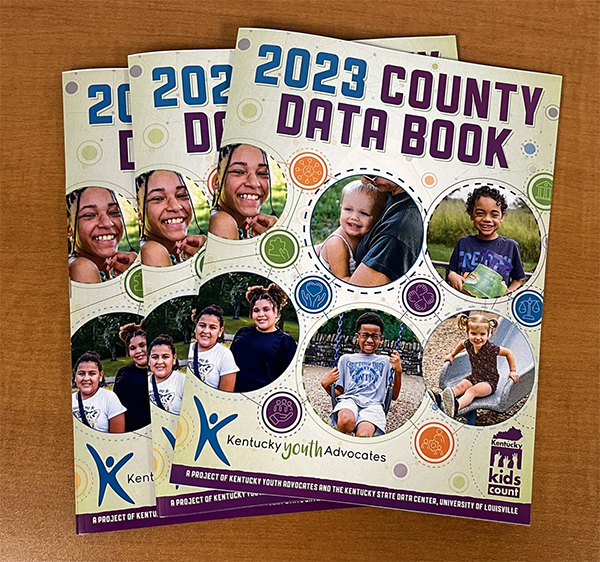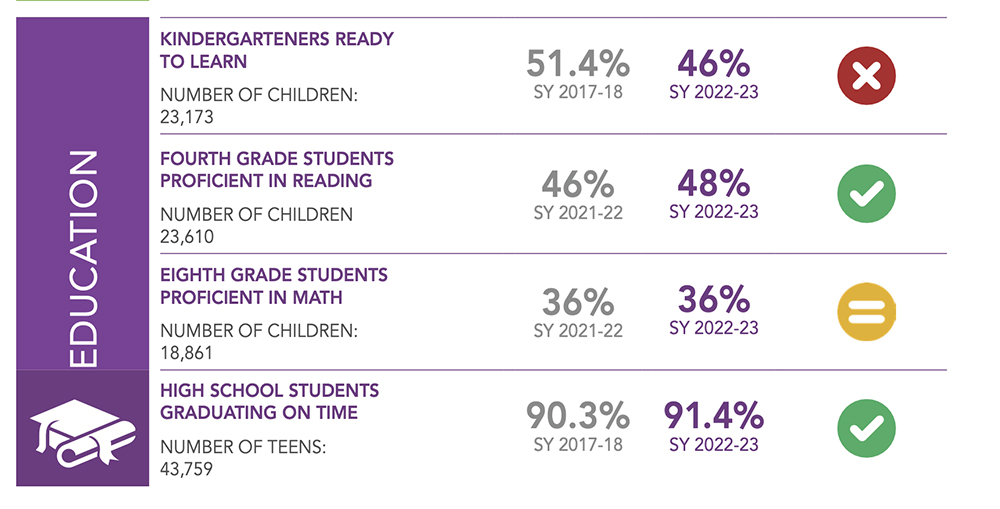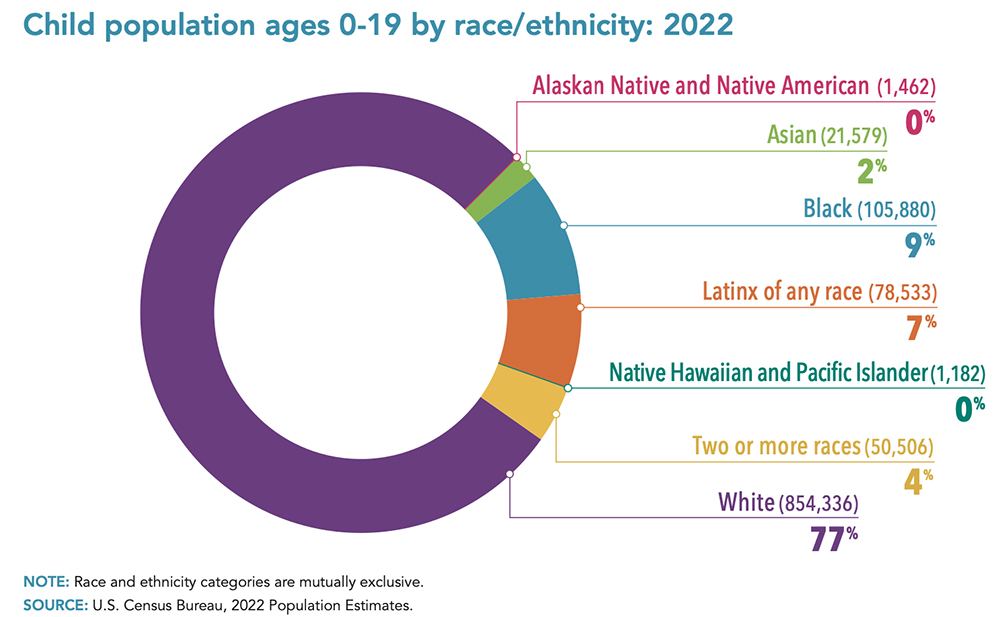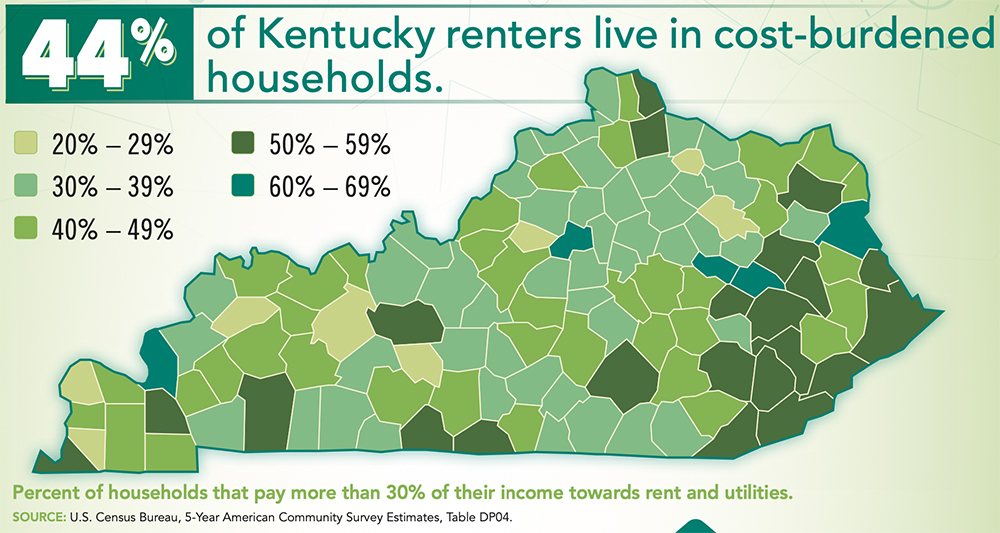By Sarah Ladd
Kentucky Lantern
Fewer Kentucky kindergarteners were ready to learn in the 2022-2023 school year than in 2018, according to a new report that measures child welfare.
This insight comes from the Kentucky KIDS COUNT County Data Book, released by Kentucky Youth Advocates Wednesday. Kids Count is part of a national initiative from the Annie E. Casey Foundation.
Kentucky Youth Advocates (KYA) compiled the state’s report with data from the Administrative Office of the Courts, Kentucky Cabinet for Health and Family Services, Department for Medicaid Services, Kentucky Center for Statistics and others.

Fewer kindergarteners being ready to learn is a symptom of COVID-19, early childhood expert Sarah Taylor Vanover with KYA told the Lantern. For the past three years many children missed out on pivotal socialization. That means they’re coming into school without the skills to self-regulate and work with others, Vanover explained.
“Three and four-year-olds…might have been having Zoom story times during the pandemic, but they weren’t getting to learn to play together,” she said. These early years, Vanover said, are when children learn to use their words to express emotion. But a lot of kids now, she said, “missed a lot of those things.”
The report also found that more children were in foster care from 2020-2022 than 2015-2017. And, fewer children left foster care and were reunited with biological families.
KYA staff looked at 16 indicators for child welfare when compiling the Kids Count book. They include the number of children in poverty, foster care and the juvenile justice system; education achievements; teen births and more.
The data shows some positive markers for Kentucky’s youth. There were 2% more fourth graders proficient in reading in the 2022-2023 school year than in the 2021-2022 school year. The number of high school students graduating on time increased from 90% to 91%.

“We’ve seen profound resilience of communities through recovery from natural disasters and the pandemic – yet those challenges present lasting impacts on family stability, mental health, education outcomes, and so much more,” Terry Brooks, the executive director of Kentucky Youth Advocates , said in a statement. “And unless and until we tackle childhood poverty – impacting more than one in five young people – Kentucky kids will continue to fall behind.”
Youth quoted in the report also said that during the next legislative session, lawmakers should invest in mental health resources, addressing food insecurities, substance use prevention and more.
Child population by race

Kentucky had 1,113,478 youth ages 0-19 in 2022, the new report shows. Of those, 854,336 are white, 105,880 are Black, 78,533 are Latinx, 21,579 are Asian, 1,462 are Native American or Native Alaskan, 1,182 are Native Hiwaiian or Pacific Islander and 50,506 are two or more races.
Economic Security
Nearly half – 44% – of Kentucky’s renters live in households that spend roughly a third of their income on rent and utilities. Eastern Kentucky counties are most affected by this, the data shows, with a swath of counties having 50-59% of their families paying a third of their income in rent and utilities.
The solution to this, the report says, is to invest in affordable and rural housing.
The report also includes a dive into child care, a sector long troubled in Kentucky and worsened by the COVID-19 pandemic.

The “significant burden” of child care, which costs more than $7,000 per year on average in Kentucky, means one in nine families experience an interruption in their workforce participation. Meanwhile, most of Kentucky’s counties – 79 out of 120 – are child care deserts, meaning they don’t have enough child care to match the number of children in need of it.
There is also a waiting list for afterschool programs in Kentucky, which are also short staffed.
Advocates said the state should dedicate funding to this sector as a solution to the crisis. They also want to see lawmakers help Kentucky’s children get free meals at school. Currently 12% of Kentucky schools do not participate in Community Eligibility Provision, which allows the nation’s highest poverty schools and districts to serve breakfast and lunch at no cost to all enrolled students without collecting household applications, according to Kids Count.
How healthy are Kentucky’s children?
Researchers want to see lawmakers increase reimbursement rates for dental providers to expand the Medicaid network for dental care. That’s because they found that people with Medicaid who had fewer dental care options ended up getting emergency department care for “non-traumatic dental conditions.”
“This treatment is not only outside the scope of most (emergency department) providers but also expensive, costing Kentucky more than $44M annually,” the report states.
Lawmakers should also consider investing in the mental health workforce through an increase in reimbursement rates, researchers said, since 1 in 6 children ages 13-17 have anxiety or depression.

On juvenile justice
Researchers want to see Kentucky lawmakers invest in community based alternatives to juvenile detention, which they say cost the state less than detention and are more effective. (During the interim, committee members dedicated to examining the juvenile justice system have heard from a number of such programs).
It costs about $588 every day to jail a minor, the Kids Count report says, while costing about $75 in diversion.

“Kentucky has an established record of failing to meet the basic standard of care for kids in detention and improve outcomes of justice-involved youth,” Kids Count states. “When a child makes a mistake, diversion and other community-based alternatives to detention, such as mental health services, mentoring, and educational supports are more effective in reducing recidivism. Youth who complete these programs also have a higher likelihood of completing high school, attending college, and earning more income in adulthood.”
The insights in this report should be a “roadmap” for Gov. Andy Beshear as he enters his second term as Kentucky governor, Brooks said. It should also, he said, guide Kentucky’s lawmakers, who in 2024 will make budgetary decisions when they convene for the legislative session.
“What we want these numbers to do,” Brooks said during a press conference, “is galvanize Gov. Beshear. And we want it to galvanize (Senate President Robert Stivers) and we want it to galvanize (House Speaker David Osborne) into creating a common ground, common sense agenda for the common good of Kentucky’s kids.”
To read the full Kids Count report, visit kyyouth.org.

















